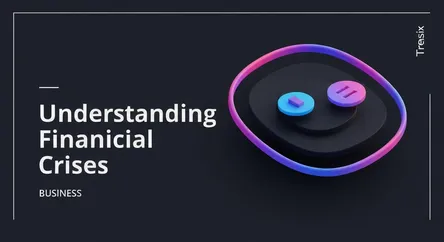Business
Understanding Financial Crises

A financial crisis occurs when key financial assets suddenly lose a large part of their value. Learn what they are, why they happen, and their impact.
What is it?
A financial crisis is a severe disruption in financial markets where asset prices see a steep decline in value. This can take many forms, including a stock market crash, a banking crisis where institutions face collapse, or a currency crisis. Essentially, it's a situation where key financial institutions or assets suddenly lose a large part of their nominal value. Information asymmetry and herd behavior often play significant roles, as panic can cause a rapid sell-off, worsening the situation. Historic examples include the Great Depression of the 1930s and the Global Financial Crisis of 2008.
Why is it trending?
Talk of a potential financial crisis is often trending due to global economic instability. Factors like high inflation, rising interest rates by central banks, geopolitical tensions, and supply chain disruptions create uncertainty. Economists constantly analyze market indicators for signs of a downturn, leading to frequent media coverage. Discussions about corporate debt levels, housing market bubbles, or banking sector vulnerabilities also keep the topic in the public consciousness, as people seek to understand the risks to the economy and their personal finances.
How does it affect people?
A financial crisis has profound effects on everyday people. It often leads to a recession, resulting in widespread job losses and increased unemployment. The value of savings, investments, and retirement accounts can plummet, erasing wealth. Banks may tighten lending standards, making it harder and more expensive to get mortgages or business capital—a phenomenon known as a credit crunch. This reduction in spending and investment slows down the entire economy, impacting consumer confidence and quality of life for millions of people.